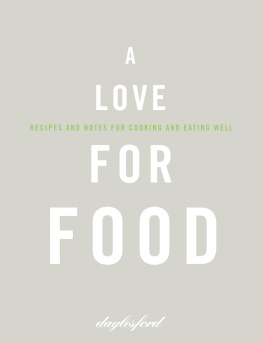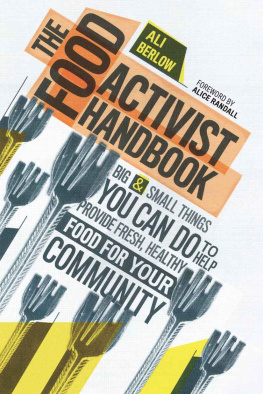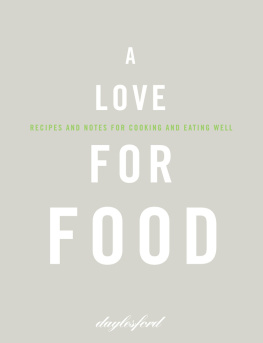Acknowledgments
I would like to thank my mother, Georgia Shafia, for teaching me how to cook and entertain with style and originality. Thank you to all the Shafias, Schafiyhas, and Shafiihas, especially Ammeh Melih, for your unconditional love and for exposing me to Persian food and culture.
My heartfelt thanks to Brie Mazurek; Im happy my proposal fell into the hands of an editor who cares deeply about the issues covered here. Im grateful to Sara Golski, Aaron Wehner, Debra Matsumoto, Patricia Kelly, Kristin Casemore, and everyone at Ten Speed Press for their enthusiastic support. Special thanks to art director Toni Tajima for incorporating a variety of viewpoints and ideas into one beautiful vision.
Thanks are due to my three muses, whose superior senses of taste and style Ive been lucky to have at my disposal: Jennifer Revit, for her golden palate and honest opinions; Julie Byun, for her willingness to advise even from across the country; and Olga Naiman, for going above and beyond in her generosity as a friend and collaborator. My thanks to Eric Tucker of Millennium Restaurant for setting an indelible example of what a good chef should be. I am also grateful to Michael Psaltis, my agent, for guiding me through the writing process with patience and humor. My army of recipe testers provided invaluable insights: thank you all for your spirit of adventure. A big round of applause goes to the hardworking chefs and servers who helped to pull off all of the wonderful Lucid Food events. I raise a glass of sambuca to Rachael Ray and John Cusimano for their generosity and support.
Finally, my gratitude goes to James Rotondi for in-house editing, endless comic distractions, and for whisking me away on vacation when I didnt know how badly I needed it.
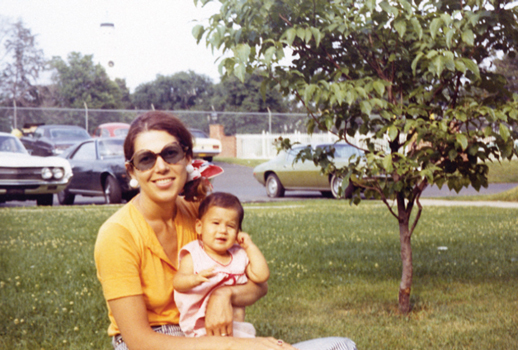
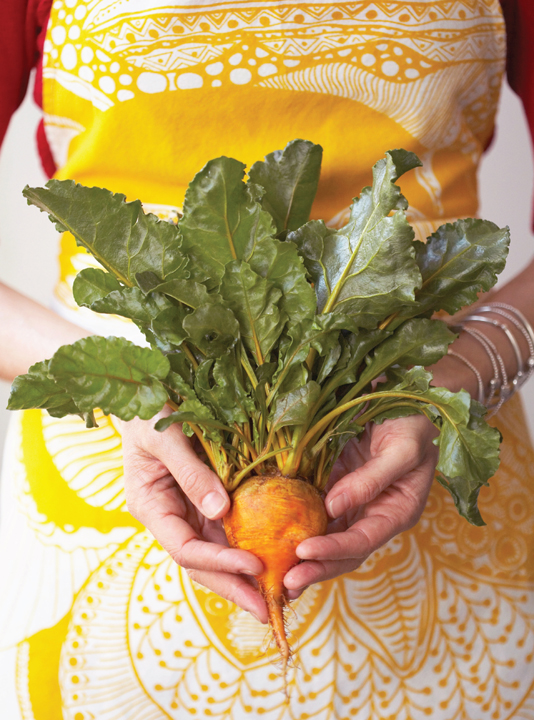
Resources
BEEKEEPING
The American Beekeeping Federation: www.abfnet.org
The Pollinator Partnership, for information on how to support pollinators and pollinating plants by discovering your eco-region and which plants to grow in your area: www.pollinator.org
Texas A&M Universitys honeybee information site: http://honeybee.tamu.edu
COMPOSTING
Worms Eat My Garbage: How to Set Up & Maintain a Worm Composting System, by Mary Appelhof (Kalamazoo, MI: Flower Press, 1997).
FAIR TRADE
Fair Trade, for information about fair trade certification and products: www.fairtrade.org
GARDENING
State extension schools, a nationwide educational network linked to the land-grant university in every state that has practical information and classes on gardening, health, nutrition, and agriculture: www.csrees.usda.gov/Extension/ to find your County Extension office.
For information on gardening, composting, and conservation, visit these websites for gardens with active conservation programs.
Berry Botanic Garden, Portland, OR: www.berrybot.org
Brooklyn Botanic Garden, Brooklyn, NY: www.bbg.org
Fairchild Tropical Botanic Garden, Coral Gables, FL: www.fairchildgarden.org
HEIRLOOMS
Native Seeds/SEARCH, for heirloom seeds and cultural preservation: www.nativeseeds.org
Rancho Gordo, for heirloom beans: www.ranchogordo.com
Seeds of Change, for heirloom seeds: www.seedsofchange.com
ASIAN INGREDIENTS
99 Ranch
Locations in CA, WA, and NV
www.99ranch.com
United Noodles
2015 E 24th Street
Minneapolis, MN 55404
www.unitednoodles.com
Uwajimaya Seattle
600 5th Avenue South
Seattle, WA 98104
www.uwajimaya.com
MIDDLE EASTERN INGREDIENTS
Ethnic Foods Co., to purchase Middle Eastern and many other ethnic ingredients: www.ethnicfoodsco.com
Kalamala, for Middle Eastern foods and kitchenware: www.kalamala.com
Kalustyans
123 Lexington Avenue
New York, NY 10016
www.kalustyans.com
Phoenicia Specialty Foods
12141 Westheimer Road
Houston, TX 77077
www.phoeniciafoods.com
LOCAL EATING
LocalHarvest, for information about local and sustainably grown food resources in your area, including farmers markets and CSAs, when you enter your zip code: www.localharvest.org
Locavores, a San Franciscobased site that provides information and resources for eating locally wherever you are: www.locavores.com
MAKING INFORMED FOOD CHOICES
Coming Home to Eat: The Pleasures and Politics of Local Foods, by Gary Paul Nabhan (New York: Norton, 2002).
Fast Food Nation: The Dark Side of the All-American Meal, by Eric Schlosser (New York: Harper Perennial, 2002).
The Omnivores Dilemma: A Natural History of Four Meals, by Michael Pollan (New York: Penguin, 2007).
What to Eat, by Marion Nestle (New York: North Point Press, 2007).
PICKLING AND CANNING
Ball Blue Book of Preserving (Muncie, IN: Alltrista Consumer Products, 2004).
Putting Food By, by Janet Greene (Lexington, MA: Stephen Greene Press, 1973).
SEAFOOD GUIDES
Environmental Defense Fund Seafood Selector, for information on nature conservation and the best and worst seafoods to buy: www.edf.org/page.cfm?tagID=1521
Monterey Bay Aquarium Seafood Watch, for information on ocean conservation and the best and worst seafoods to buy: www.montereybayaquarium.org/cr/SeafoodWatch/web/sfw_factsheet.aspx
Natural Resources Defense Council, for recipes using eco-friendly fish choices: www.nrdc.org/water/oceans/gseafood.asp
SUSTAINABLE FOOD ISSUES
Center for Food Safety, a nonprofit food policy watchdog that campaigns for sustainable food production: www.centerforfoodsafety.org
Sustainable Table, an online magazine about local and sustainable food, covering a wide range of topics: www.sustainabletable.org
WILD FORAGING
All That the Rain Promises, and More, by David Arora (Berkeley, CA: Ten Speed Press, 1991).
The Audubon Society Field Guide to North American Mushrooms, by Gary Lincoff (New York: Knopf, 1981).
Mushrooms Demystified, by David Arora (Berkeley, CA: Ten Speed Press, 1986).

fall
As the weather gets colder, a warm room filled with people, food, and drink takes on a novel allure, and social events fill the calendar with increasing frequency until they reach their holiday peak. All of this makes fall a perfect time to try out innovative ways of entertaining and sharing meals. In this chapter, youll find ideas for organizing inexpensive, eco-friendly gatherings with an emphasis on bringing people together around simple, seasonal food. During harvest season, the beautiful produce of summer bursts forth one last time with a fierce blast of flavor before going dormant for the winter. Traditionally, people living in temperate climates have used fall days to preserve fresh fruits and vegetables. (See the chapter on for easy recipes for savoring the harvest flavors after the temperature drops.)
In the fall, nature demonstrates how composting works; leaves fall to the ground to form a nourishing layer as we enter the period of decay that allows the earth to replenish itself and bloom anew in the spring. Happily, we can follow this example all year round. In this chapter, youll learn how the simple act of saving vegetable scraps can help to abate our landfill crisis, and youll find practical tips for setting up your own compost.




